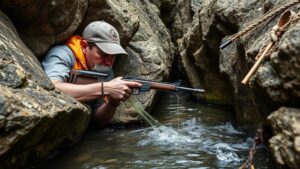Using Portable Assay Kits to Test for Silver Content in Rocks
Using Portable Assay Kits to Test for Silver Content in Rocks
Testing for silver content in rocks is a vital component of mineral exploration and geological study. Portable assay kits provide an efficient, cost-effective, and accurate means for assessing silver levels in various geological specimens. This article delves into the applications, methodologies, and benefits of using these kits in the field.
Understanding Portable Assay Kits
Portable assay kits are compact, user-friendly tools designed for the on-site analysis of mineral content. e kits typically include reagents and instruments for semi-quantitative analysis, enabling geologists to quickly assess the presence of metals like silver, gold, and copper.
An example of a commonly used portable assay kit is the Neutron Activation Analysis (NAA) method, which utilizes neutron flux to excite atomic nuclei and subsequently measure gamma emissions to quantify metal content. The portability factor allows for immediate testing in remote areas where laboratory access is limited.
Key Components of Portable Assay Kits
Portable assay kits generally consist of the following components:
- Testing reagents: Chemicals that react with silver ions to produce a measurable change, often a colorimetric shift.
- Measuring instruments: Tools such as spectrophotometers or colorimeters that measure the intensity of the color change.
- Sample collection materials: Tools for collecting and preparing the rock samples to ensure accurate testing.
Methodologies for Testing Silver Content
The process of testing for silver in rocks using portable assay kits generally follows these steps:
- Sample Collection: Collect rock samples from targeted areas using appropriate geological techniques.
- Preparation: Crush and homogenize samples to ensure uniformity, which is crucial for obtaining accurate results.
- Testing: Treat the samples with reagents from the assay kit. Follow the specific procedure outlined in the kits manual to ensure consistent and reliable results.
- Measurement: Use the measuring instrument to determine the intensity of the reaction, which correlates to the silver content.
- Analysis: Compare the obtained values against standard charts to quantify the silver concentration in parts per million (ppm).
Real-World Applications
Portable assay kits are increasingly being used in various industries such as mining, education, and research. For example:
- Mining Exploration: Companies utilize portable assay kits to quickly gauge the mineral potential of different rock formations before committing to more extensive sampling and drilling.
- Environmental Monitoring: Environmental scientists may use these kits to monitor silver contamination in soils near mining sites, helping stakeholders make informed decisions about remediation actions.
Benefits of Portable Assay Kits
There are several notable benefits to using portable assay kits for analyzing silver content in rocks:
- Time Efficiency: Rapid onsite testing reduces the time spent on transportation and laboratory analysis, facilitating timely decision-making.
- Cost-Effectiveness: Reduced need for transportation and delays minimizes costs, making it viable for smaller operations and academic projects.
- Accessibility: The portability allows users to conduct tests in remote locations, where traditional lab facilities may not be available.
Potential Challenges and Considerations
Despite the advantages, it is crucial to address potential challenges when using portable assay kits:
- Accuracy Limitations: Portable kits often provide semi-quantitative results, which may not be as precise as laboratory analysis.
- Operator Training: Users must be adequately trained in the use of kits to ensure accurate sample preparation and analysis.
Actionable Takeaways
Utilizing portable assay kits for testing silver content in rocks is a practical approach for geologists and mining professionals. Here are some actionable takeaways:
- Invest in high-quality portable assay kits that meet industry standards.
- Prior to fieldwork, ensure all team members are trained in the operation and limitations of the kits.
- Keep thorough records of all tests performed, including environmental conditions and sample locations, for future reference.
In summary, portable assay kits serve as a catalyst for effective mineral exploration and environmental monitoring. By understanding their capabilities and limitations, users can significantly enhance their geological assessments and exploration strategies for silver content and other metals.


